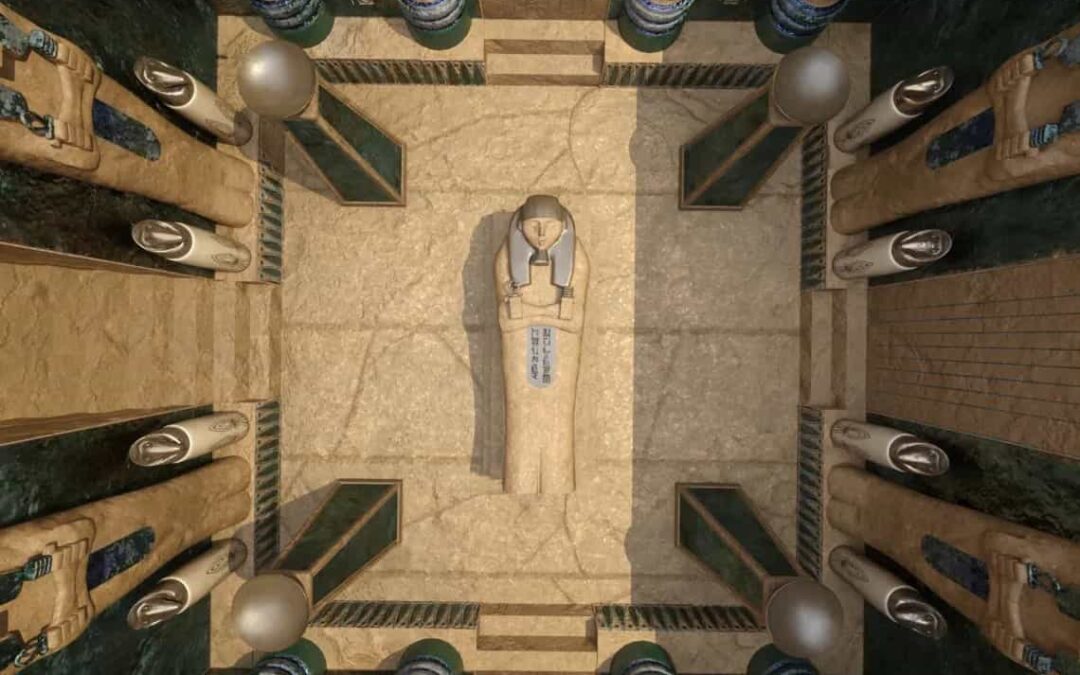The resting place of the last queen of Egypt, Cleopatra, has long perplexed archaeologists.
Despite the immense fame of the legendary queen of ancient Egypt, immortalized for millennia as a captivating beauty, her tomb remains one of the great unsolved mysteries in archaeology. Cleopatra, a leading woman of her era and an iconic figure in the ancient world, has left a legacy shrouded in uncertainty.
Some speculate that she was interred in Alexandria, the city of her birth and the seat of her rule from her royal palace—a city devastated by the 365 AD tsunami.
Others propose an alternative theory, suggesting that her final resting place may be located approximately 50 kilometers away, within the ancient temple of Taposiris Magna. This temple, constructed by her Ptolemaic ancestors in the Nile Delta, is considered a potential site for Cleopatra’s tomb.
In 2020, researchers discovered two mummies of high-status individuals at Taposiris Magna, contemporaries of Cleopatra. These mummies, originally adorned with gold leaf—a luxury reserved for the highest echelons of society—were found to be a female and a male through radiographic analysis.
The individuals could have been priests playing a pivotal role in upholding the pharaohs’ power. One of the mummies features an image of a scarab, symbolizing rebirth, painted in gold leaf.
Despite Cleopatra being the last ruler of the Ptolemaic dynasty, which governed Egypt for almost three centuries, no tombs of any Ptolemaic pharaohs have been discovered.
In a significant find at the altar of the Taposiris Magna temple, where priests likely made offerings to the gods, 200 coins bearing the name of Cleopatra and her likeness have been unearthed.
This discovery directly associates the queen of Egypt with Taposiris Magna and showcases a distinct image of the queen on the coins—depicted with a prominent nose and double chin, in contrast to the classic beauties often portrayed in movies.
But Are We About to Discover Cleopatra’s Grave?
At the Taposiris Magna site, additional remains dating from Cleopatra’s time have been unearthed, including the previously mentioned treasure of coins minted during her reign.
Despite optimistic expectations, it seems unlikely that Cleopatra was laid to rest at Taposiris Magna. Many scholars lean toward the belief that Cleopatra’s burial site would be in Alexandria, perhaps in an area now submerged underwater.
Over the last two millennia, coastal erosion has submerged parts of Alexandria, including the vicinity of Cleopatra’s palace. It is conceivable that Cleopatra’s tomb, if located in Alexandria, may have been destroyed in ancient times or buried beneath the modern structures of the city.
The Quest for Cleopatra
The search for Cleopatra’s final resting place has sparked considerable speculation and remains alluring. The elusiveness of Cleopatra’s grave is not unique; there are several renowned figures from antiquity whose burial sites remain undiscovered (excluding cultures where cremation was customary, and grand tomb construction was not practiced).
For instance, the tombs of Nefertiti or Alexander the Great are still unknown, contributing to the enduring mystery surrounding these historical figures.







